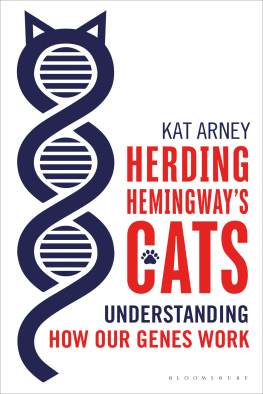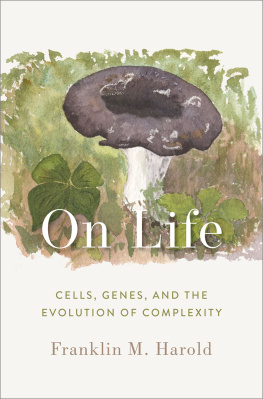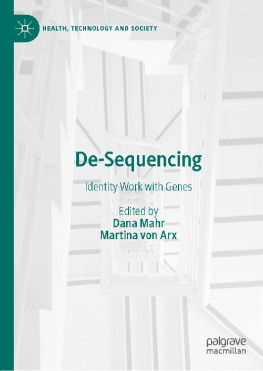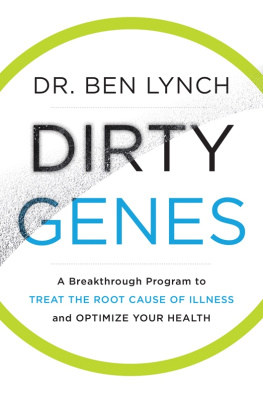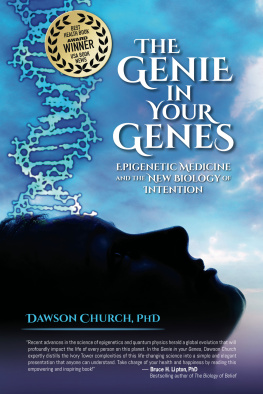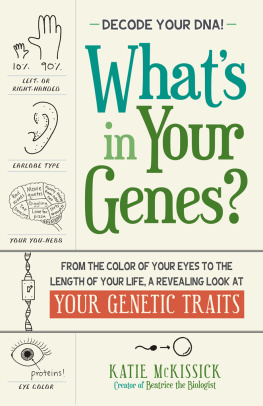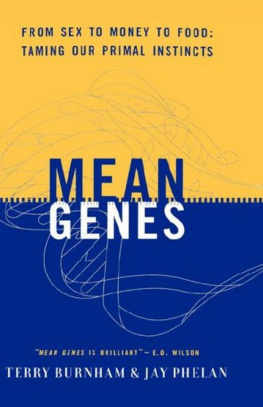HERDING HEMINGWAYS CATS
Also available in the Bloomsbury Sigma series:
Sex on Earth by Jules Howard
p53 The Gene that Cracked the Cancer Code by Sue Armstrong
Atoms Under the Floorboards by Chris Woodford
Spirals in Time by Helen Scales
Chilled by Tom Jackson
A is for Arsenic by Kathryn Harkup
Breaking the Chains of Gravity by Amy Shira Teitel
Suspicious Minds by Rob Brotherton
To Mum and Dad, with much love
Thanks for the nature and the nurture
HERDING HEMINGWAYS CATS
Understanding how our genes work
Kat Arney

Contents
It all started with a photo of a cat. I was hiding at the back of a scientific conference at the Royal Society in London when a cuddly looking cat with unusually big feet caught my eye. This is a Hemingway cat, said the lecturer, pointing at the animal on the large screen behind him. They have six toes theyre polydactyl. Ernest Hemingway was said to be fond of them, and they still live on his estate in Florida today. And here he poked at the computer, changing the slide to one covered with photos of misshapen human hands, are polydactyl children with extra digits. Its the same genetic mistake that causes them.
Looking at a six-toed cat or six-fingered human, a natural assumption might be that its due to a fault in a gene. But its not. In fact the cause lies in a faulty region of DNA that acts as a control switch, normally turning a gene on at the right time in the right place to direct the formation of fingers and toes as a baby or kitten grows in the womb. Not only that, but the switch is miles away (in molecular terms) from the gene it acts upon. Learning about the Hemingway cats and their broken switches got me thinking about my own understanding of how genes work, and how I explain it to the public through my work as a science writer and broadcaster.

My first real brush with modern genetics came while I was at secondary school, courtesy of our formidable deputy headmaster Mr Myers. As well as stalking the school corridors with a steely glare of stern disapproval, doling out detentions seemingly at random, he also doubled as a biology teacher. One day it was his turn to preside over the regular school assembly. We dutifully trooped into the main hall to sit cross-legged on the floor, doing our best to avoid his eye. He took to the stage, black academic gown flowing out behind him like a cape, clasping in his hand what looked like a magazine but must have been a scientific journal of some kind. Towering in impotent fury from the stage, he shook it at us in disapproval as if it were a piece of pornography fished out from behind a cistern in the boys toilets. Look at this! he thundered, slapping at a page covered in the letters A, C, T and G, repeated in seemingly endless permutations. Its like the phone book! All these letters. Letters, letters, letters. A pause for breath. THIS IS BIOLOGY NOWADAYS!
While Mr Myers may have believed that ACTG was a four-letter word, the language of genes has made its way into common parlance over recent years. Genes are the things in your DNA that make your eyes blue, your belly bulge or your hair curl. The newspapers tell us that they control our risk of cancer, heart disease, alcoholism, Alzheimers and more. A thousand dollars will buy you your very own genomic readout, sequenced in a matter of days and neatly stored on a USB stick. Genetic knowledge has the power to save us there are drugs targeting the products of faulty genes in tumours, and recent advances in gene therapy that let the blind see. And we can trace the march of genes writ large in the seemingly endless variations of life on the face of our planet evolution is just genetics plus time, after all.
Today we merrily talk about all sorts of things being in our genes, from a talent for singing to a life-threatening cancer. My mother is obsessed with family history, believing that almost every aspect of mine and my sisters characters can be traced back to one or other of my long-dead ancestors, be they Baptist preachers or depressive alcoholics. shorthand for Ooh, science! But while the language of genetics has infiltrated the public consciousness, a genuine understanding of what our genes are and what they do has not.
Most biology textbooks define genes as particular strings of DNA letters chemicals known as bases and there are four of them in common use in all living things: A, C, T and G, short for adenine, cytosine, thymine and guanine. The particular order of the letters encodes instructions telling the cells in your body to make various molecules, in the same way that different recipes encode the directions for making cakes, pies or stews.
Unfortunately, its not as simple as viewing our genome as a biological Mrs Beeton or Martha Stewart. As technology develops and scientists discover more about the secrets within our cells, the picture has begun to get very murky indeed. More than 2 metres (6 feet) of DNA is packed into almost every cell of your body, crammed with thousands of genes that need to be turned on and off at the right time and in the right place. Rather than a neatly bound set of recipes, the genome as we understand it today is a dynamic, writhing library, buzzing with biological readers and writers. The text is constantly copied, tweaked and occasionally even torn up altogether. Every volume bulges with annotations and sticky notes, and there are thousands of pages that just seem to be complete nonsense. The cataloguing system would give even the hardiest librarian a nervous breakdown. Yet out of this chaos, we create life.
Right from the start, when a lucky sperm enters an egg, were built by a complex biological ballet of gene activity enabling us to grow from a single cell into a baby. Intricate structures form: the twisting tubes of a heart, the rippling folds of a brain, the birdlike bones of a tiny skeleton. Along the way, each type of cell develops its own specialism. Skin cells form sturdy, neat layers to keep our insides in and the outside out, while our brain cells crackle with tiny pores transmitting electrical impulses. All of this is controlled by our genes. But how are they doing it? How do our genes really work?
In search of answers, I travelled and Skyped my way around the world talking to a range of researchers working at the frontiers of genetics, past and present. There wasnt any particularly clever selection process behind my hit list. In some cases they were people I already knew from my previous incarnation as a research scientist. Others were recommended to me, or just seemed like interesting people to go and see, based on the ideas and work they had published. Not all of their stories are told here, but every single person I spoke to shaped my thinking in some way. Im grateful to them all for their time, intellectual generosity and coffee. Lots of coffee.
As well as asking everyone about their research, I always ended each interview with the same question: What do you think is weird? The history of science tells us that todays inexplicable oddities are tomorrows revolutionary breakthroughs, and I wanted to look down the road were heading along, as well as mapping out our current understanding. When I started working on this book I thought I was pretty clued up. After all, Id spent years studying genetics and working in research labs dedicated to figuring out whats going on as our genes are read and interpreted. But as I started talking, reading and thinking about it all, my preconceptions skittered away from me like wilful kittens. It turns out that theres a lot less certainty and a lot more myth and dogma around our genes than many people might realise.

